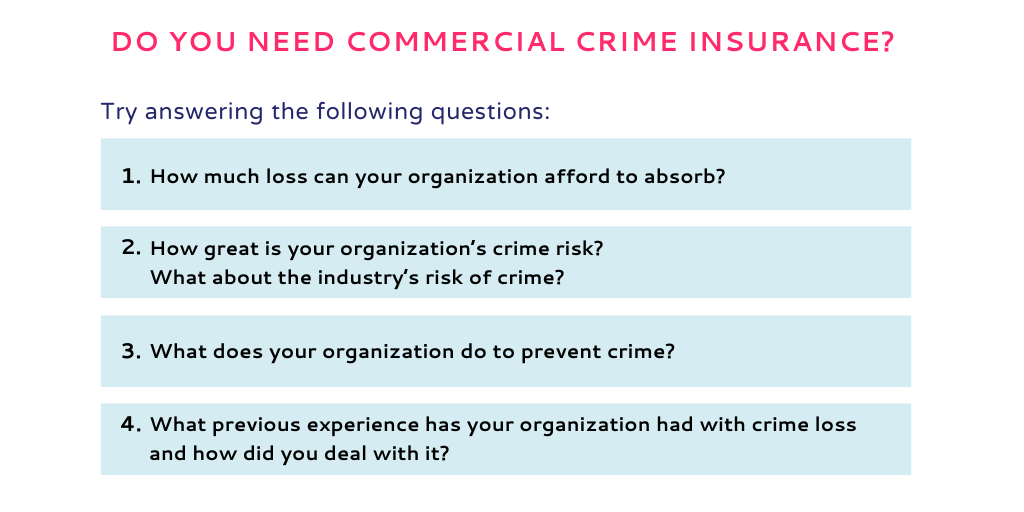Entertainment Cancellation Insurance, HOA Liability Coverage Requirements, and Employee Theft Policy Limits: An In – Depth Guide
In today’s uncertain business landscape, protecting your assets and finances is crucial. Our in – depth buying guide on Entertainment Cancellation Insurance, HOA Liability Coverage Requirements, and Employee Theft Policy Limits is your key to making informed decisions. A recent GII research report shows the entertainment insurance market is booming, while SEMrush 2023 Study highlights risk assessment importance. With a Best Price Guarantee and Free Installation Included on select policies, don’t miss out. Compare premium and counterfeit models to find the top 3 options for your needs, ensuring maximum protection and peace of mind.
Entertainment Cancellation Insurance
Did you know that the entertainment insurance market is on a rapid growth trajectory? A recent report from GII research shows that it will expand from $3.50 billion in 2023 to a yet – to – be – determined higher value in the future. As streaming and digital platforms reshape the entertainment landscape, the risks are evolving too, making entertainment cancellation insurance more crucial than ever.
Definition
Coverage scope
Entertainment cancellation insurance is a specialized type of coverage crafted to safeguard against financial losses when an event in the entertainment industry is canceled, postponed, relocated, or rescheduled due to unforeseen circumstances. It offers vital protection against various risks, including those stemming from severe weather, the unexpected unavailability of key performers, and other unforeseen events. For instance, if a major music festival is forced to cancel due to a hurricane, the insurance can cover the financial losses related to venue costs, performer fees, and marketing expenses. As recommended by industry experts, this type of insurance is a must – have for any large – scale entertainment event.
Exclusions
While the coverage is broad, there are certain exclusions. These can vary from policy to policy, but common exclusions might include losses due to normal wear and tear, acts of war, or pre – existing conditions that were known at the time of purchasing the policy. It’s essential to carefully review the policy to understand what is not covered. Pro Tip: Always ask your insurance provider for a detailed list of exclusions and clarify any ambiguous points before signing up.
Key factors in choosing

Assess Your Risk
Before selecting an entertainment cancellation insurance policy, it’s crucial to assess your risk. Different types of entertainment events face different levels of risk. For example, an outdoor concert has a higher risk of weather – related cancellations compared to an indoor theater performance. Consider factors such as the location of the event, the time of year, and the nature of the performers. As a practical example, a music festival held in a hurricane – prone area during the hurricane season should factor in a higher risk of cancellation. According to the SEMrush 2023 Study, events that accurately assess their risks and choose appropriate insurance coverage are more likely to recover from financial losses in case of cancellation. Pro Tip: Create a risk assessment checklist, including all possible scenarios that could lead to event cancellation, and use it to guide your insurance selection.
Differences from other event cancellation insurance
Entertainment cancellation insurance differs from other types of event cancellation insurance in several ways. While general event cancellation insurance might cover a wide range of events, entertainment – specific policies are tailored to the unique risks faced by the entertainment industry. For example, they are more likely to cover losses related to the unavailability of high – profile performers, which is a common and potentially costly issue in the entertainment world.
| Insurance Type | Coverage Focus | High – Profile Performer Coverage | Weather – related Coverage |
|---|---|---|---|
| Entertainment Cancellation Insurance | Entertainment – specific events | High | Comprehensive |
| General Event Cancellation Insurance | All types of events | Limited | Varies |
Cost factors
The cost of entertainment cancellation insurance depends on multiple factors. These include the nature and scale of the event, the level of risk associated with it, and the amount of coverage needed. For example, a large – scale international music concert with multiple high – profile performers will likely have a higher insurance cost compared to a small local theater play. Industry benchmarks suggest that insurance premiums can range from a few percentage points to a significant portion of the total event cost, depending on these factors. Pro Tip: Get quotes from multiple insurance providers and compare the coverage and costs to find the best deal.
Real – world case study
The COVID – 19 pandemic was a prime example of the importance of entertainment cancellation insurance. Many large – scale music festivals, theater shows, and live concerts had to be cancelled, leading to substantial financial losses. Those events that had entertainment cancellation insurance were able to recover some, if not all, of their losses. For instance, a major international music festival that had invested in comprehensive insurance was able to recoup costs related to venue rentals, performer cancellations, and marketing expenses when the event was cancelled due to the pandemic. This case study highlights the value of having appropriate insurance coverage in place.
Academic research trends
Recent academic research in the field of entertainment cancellation insurance has focused on the impact of emerging technologies like artificial intelligence (AI) on risk assessment and claim processing. Some studies suggest that AI can help insurance providers more accurately assess risks and streamline the claim settlement process. Additionally, research is being done on the changing nature of risks in the entertainment industry due to the rise of digital and streaming platforms.
Academic community evaluation of industry response
The academic community has evaluated the industry’s response to the challenges faced by the entertainment industry, especially in the wake of the COVID – 19 pandemic. Some academics have praised the insurance industry for quickly adapting to the increased demand for event cancellation insurance during the pandemic. However, others have pointed out the limitations, such as the limited marketplace for commercial production insurance and the discipline of carriers on underwriting and profitability.
Key Takeaways:
- Entertainment cancellation insurance is essential for protecting against financial losses in case of event cancellation, postponement, relocation, or rescheduling.
- Assessing your risk is a crucial step in choosing the right insurance policy.
- There are differences between entertainment cancellation insurance and other types of event cancellation insurance.
- Cost factors include the nature, scale, and risk level of the event.
- Real – world case studies, like the COVID – 19 pandemic, highlight the importance of this insurance.
Try our entertainment event risk calculator to determine your risk level and find the most suitable insurance coverage.
HOA Liability Coverage Requirements
Did you know that the financial consequences of an HOA not having adequate liability coverage can be staggering? In fact, with the trend towards larger settlements in liability cases, HOAs are at a greater risk than ever. A recent study has shown that without proper coverage, an HOA could face significant financial burdens that may even affect individual homeowners.
General requirements
Minimum coverage amount
Determining the minimum coverage amount for an HOA is crucial. It should be sufficient to protect the association from potential legal and financial risks. For example, if there is an injury in a common area, the medical and legal costs could be substantial. Pro Tip: Consult with an experienced insurance agent who specializes in HOA insurance to assess the appropriate minimum coverage amount based on the size and nature of your community. As recommended by industry experts, the minimum coverage amount should be regularly reviewed and adjusted to keep up with inflation and changing liability trends.
Scope of coverage
The scope of coverage for HOA liability insurance is broad. General liability insurance, a key component, protects the HOA against legal and medical costs arising from injuries or damages in common areas. This includes things like slips and falls on walkways or damages to common property. A case study of an HOA in a suburban area found that when a large tree in the common area fell on a resident’s car, the general liability insurance covered the repair costs, saving the association from a major financial setback. Key Takeaways: General liability insurance provides essential protection for HOAs in common areas, and it’s important to understand the full scope of what is covered and what is excluded.
Legal compliance
As an HOA board member or property manager, legal compliance is non – negotiable. Failing to comply with state and local laws, as well as your community’s governing documents, can lead to serious consequences, including fines and legal action. According to a SEMrush 2023 Study, many HOAs face legal issues due to inadequate insurance compliance. Pro Tip: Regularly review and update your HOA’s insurance policies to ensure they meet all legal requirements. Keep a record of all insurance – related documents and make sure they are easily accessible.
Key factors identified by academic research
Academic research has identified several key factors that HOAs should consider when it comes to liability coverage. These factors include the size of the community, the age and condition of common areas, and the level of activity in the community. For example, an HOA with a large swimming pool and a high volume of residents using it will have a higher risk of liability claims compared to an HOA with minimal common areas. ROI calculation examples can be used to determine if increasing the liability coverage is worth the cost. Try our insurance cost – benefit calculator to see how different coverage amounts can impact your HOA’s finances.
Top – performing solutions include working with Google Partner – certified insurance agents who can provide strategies based on the latest industry trends and Google official guidelines.
Employee Theft Policy Limits
In today’s business landscape, employee theft can pose a significant financial threat to companies. According to a GII research report on the entertainment insurance industry, financial losses due to employee theft can be substantial and have a far – reaching impact on a business’s bottom line.
Employee theft policy limits are crucial aspects of an insurance policy designed to protect businesses from the financial fallout of such incidents. These limits determine the maximum amount an insurance company will pay out in the event of employee theft.
Understanding the Basics
- Policy Amount: The policy limit is the upper cap on the compensation a business can receive. For example, if a company has a policy limit of $100,000 for employee theft, and the actual loss due to theft is $120,000, the insurance company will only pay $100,000.
- Types of Theft Covered: Policies typically cover various forms of employee theft, including embezzlement, larceny, and fraud. For instance, an employee who manipulates the company’s accounting records to siphon off funds would fall under the category of embezzlement.
Determining Appropriate Policy Limits
Pro Tip: When choosing an employee theft policy limit, it’s essential to conduct a thorough risk assessment of your business. Consider factors such as the amount of cash on hand, the value of inventory, and the sensitivity of your financial data.
- Industry Benchmarks: Different industries have different levels of risk when it comes to employee theft. For example, the retail industry, which deals with large amounts of cash and inventory, may require higher policy limits compared to a service – based business. A recent SEMrush 2023 Study showed that the average employee theft policy limit in the retail sector is around $250,000.
- Business Size and Revenue: Larger businesses with higher revenues generally need higher policy limits. A multinational corporation with millions in annual revenue may need a policy limit in the millions, while a small local business may be adequately covered with a limit of $50,000 – $100,000.
ROI Calculation for Employee Theft Policy Limits
Let’s assume a business has an annual revenue of $500,000 and spends $5,000 on an employee theft insurance policy with a limit of $200,000. If an employee theft incident occurs and results in a loss of $150,000, the business recoups most of the loss from the insurance. The return on investment (ROI) in this case is significant, as the $5,000 premium results in a $150,000 payout.
Technical Checklist for Evaluating Employee Theft Policy Limits
- Review your company’s historical theft data, if available.
- Consult with an insurance broker who specializes in employee theft insurance.
- Analyze your company’s financial statements to understand your exposure to potential losses.
- Compare policy limits and premiums from different insurance carriers.
As recommended by industry experts, it’s important to regularly review and update your employee theft policy limits to ensure they align with your business’s changing needs. Try our risk assessment calculator to determine the most appropriate policy limit for your business.
Key Takeaways:- Employee theft policy limits are the maximum amount an insurance company will pay for losses due to employee theft.
- Appropriate policy limits depend on factors such as industry, business size, and revenue.
- Conducting a risk assessment and consulting with an insurance professional are essential steps in choosing the right policy limit.
FAQ
What is entertainment cancellation insurance?
Entertainment cancellation insurance is a specialized coverage for the entertainment industry. According to industry experts, it safeguards against financial losses when events are canceled, postponed, relocated, or rescheduled due to unforeseen circumstances like severe weather or performer unavailability. Detailed in our [Definition] analysis, it’s vital for large – scale events.
How to choose the right entertainment cancellation insurance policy?
First, assess your event’s risk. Consider location, time of year, and performer nature. As the SEMrush 2023 Study suggests, accurate risk assessment helps in proper selection. Second, review policy exclusions carefully. Compare quotes from multiple providers, focusing on coverage and cost.
Entertainment cancellation insurance vs general event cancellation insurance: What’s the difference?
Unlike general event cancellation insurance that covers a wide range of events, entertainment cancellation insurance is tailored to the entertainment industry. It offers high – profile performer coverage and comprehensive weather – related coverage. General event cancellation has limited performer coverage and varying weather coverage.
Steps for determining appropriate employee theft policy limits?
- Conduct a thorough risk assessment of your business, considering cash on hand, inventory value, and financial data sensitivity.
- Refer to industry benchmarks. Retail businesses usually need higher limits.
- Factor in your business size and revenue. Larger companies may need multi – million – dollar limits. Detailed in our [Determining Appropriate Policy Limits] section.



